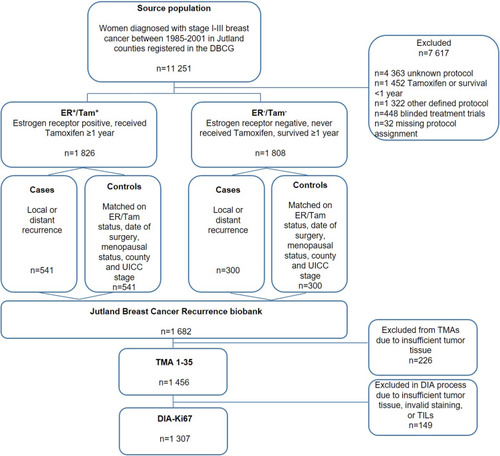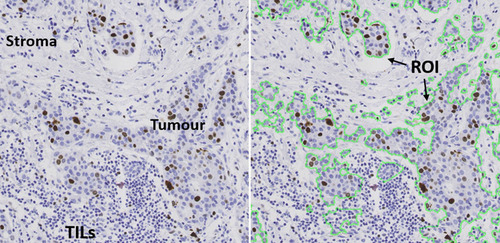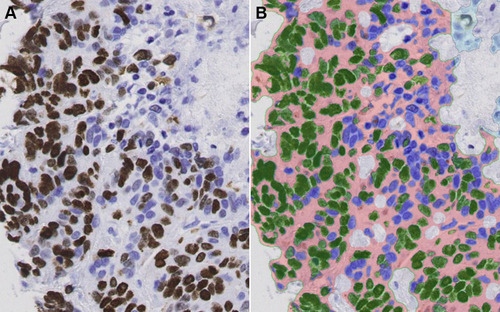Figures & data
Figure 1 Study design.

Figure 2 Tumor region of interest (ROI).
Abbreviations: APP, analysis protocol package; TILs, tumor-infiltrating lymphocytes.

Figure 3 Representation of DIA scoring of Ki-67.
Abbreviation: DIA, digital image analysis.

Table 1 Patient and Clinical Characteristics for Cases and Controls of the Jutland Breast Cancer Recurrence Biobank
Table 2 Associations Between Ki-67 Expression and Breast Cancer Recurrence Within ER/Tam Groups
